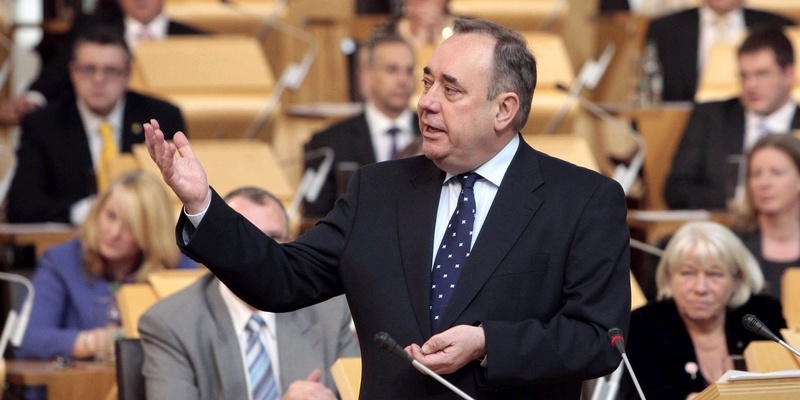Alex Salmond fired the starting gun on the march to independence as he demanded major new powers for the Scottish Parliament.
Turning to his plans for broadcasting, Mr Salmond restated his desire to see the creation of a Scottish digital television channel.
On the EU, he said the involvement of Scottish ministers was currently “in the gift” of the UK Government. He called for their role to be officially recognised.
The three new demands came amid continued debate over what form an independent Scotland would take. Mr Salmond has said he will bring forward a referendum on independence during the second half of this five-year parliamentary term, but has not provided a definition of what independence means.
His speech on Wednesday again referred to independence without providing specific detail.
“Whatever changes take place in our constitution, we will remain close to our neighbours,” he said. “We will continue to share a landmass, a language and a wealth of experience and history with the other peoples of these islands.
“My dearest wish is to see the countries of Scotland and England stand together as equals. There is a difference between partnership and subordination. The first encourages mutual respect. The second breeds resentment.”
But Michael Moore warned the SNP need to be “very clear, very quickly” what they mean by independence.
“They need to recognise that the longer there is uncertainty about what they mean by independence, or the prospect of it, the greater uncertainty this causes across the United Kingdom,” said the Liberal Democrat MP.
“That ultimately is not good for Scotland’s economy, and for my part I think they have got to take account of those concerns. They have got to be able to justify exactly what it is they are asking the people of Scotland to decide and why they should wait to decide that for a number of years.”
Scottish Labour leader Iain Gray used his speech congratulating Mr Salmond on being reappointed as first minister to urge him not to get distracted by independence.
“In the past 10 days we have heard plenty about the 57 varieties of independence,” he said. “We have heard nothing about unemployment. Yes, we will explore the powers we might have but the most urgent and pressing matter is how to exercise the powers we do have to create opportunity now.”
Annabel Goldie also warned the first minister his “only mandate” was to run a devolved government.
MSPs backed Mr Salmond’s appointment as first minister, which requires final approval from the Queen, by 68 votes to zero, with 57 abstentions.
The move came after the SNP won 69 of the 129 Scottish Parliament seats in a landslide election victory.
Photo by Andrew Cowan/Scottish Parliament.
In his first Holyrood speech after officially being reappointed first minister on Wednesday, the SNP leader outlined key areas where he wants to see the devolution settlement strengthened.
He called for new control over excise duties on alcohol and tobacco, the devolution of responsibility for broadcasting, and an increase in Scottish representation at the European Union.
The move was widely seen as a Nationalist power play in the ongoing negotiations with Westminster over Scotland’s constitutional future.
Mr Salmond had previously met Scottish secretary Michael Moore to lobby for immediate borrowing powers for the Scottish Parliament and the devolution of Crown Estate revenues and corporation tax.
He said he had focused on these areas as he believed a “consensus” could be formed with other parties.
“I have outlined six areas of potential common ground where there is agreement across the parliament to a greater or lesser extent,” he said. “I think we should seize the moment and act together to bring these powers back home. Let this parliament move forward as one to make Scotland better.”
The new powers would be included in the Scotland Bill, which is going through Westminster and will return to Holyrood in the autumn for final approval or veto.
As it stands, the bill would give the Scottish Parliament tax and borrowing powers and control over drink-drive limits, speed limits and air weapon legislation. But the SNP have consistently criticised the scope of its powers and, with an increased mandate following their historic Holyrood election victory, are determined to push for changes.
Mr Salmond said control of excise duty, which generated £1.7bn in revenue in 2008-09, could potentially ease Labour concerns over the impact of the SNP’s key policy of introducing a minimum price for alcohol.
“Our Labour colleagues agree that it is correct to set a minimum price for alcohol, but they were concerned about where the revenues would go,” he said. “Gaining control of excise would answer that question.”
Continued…
